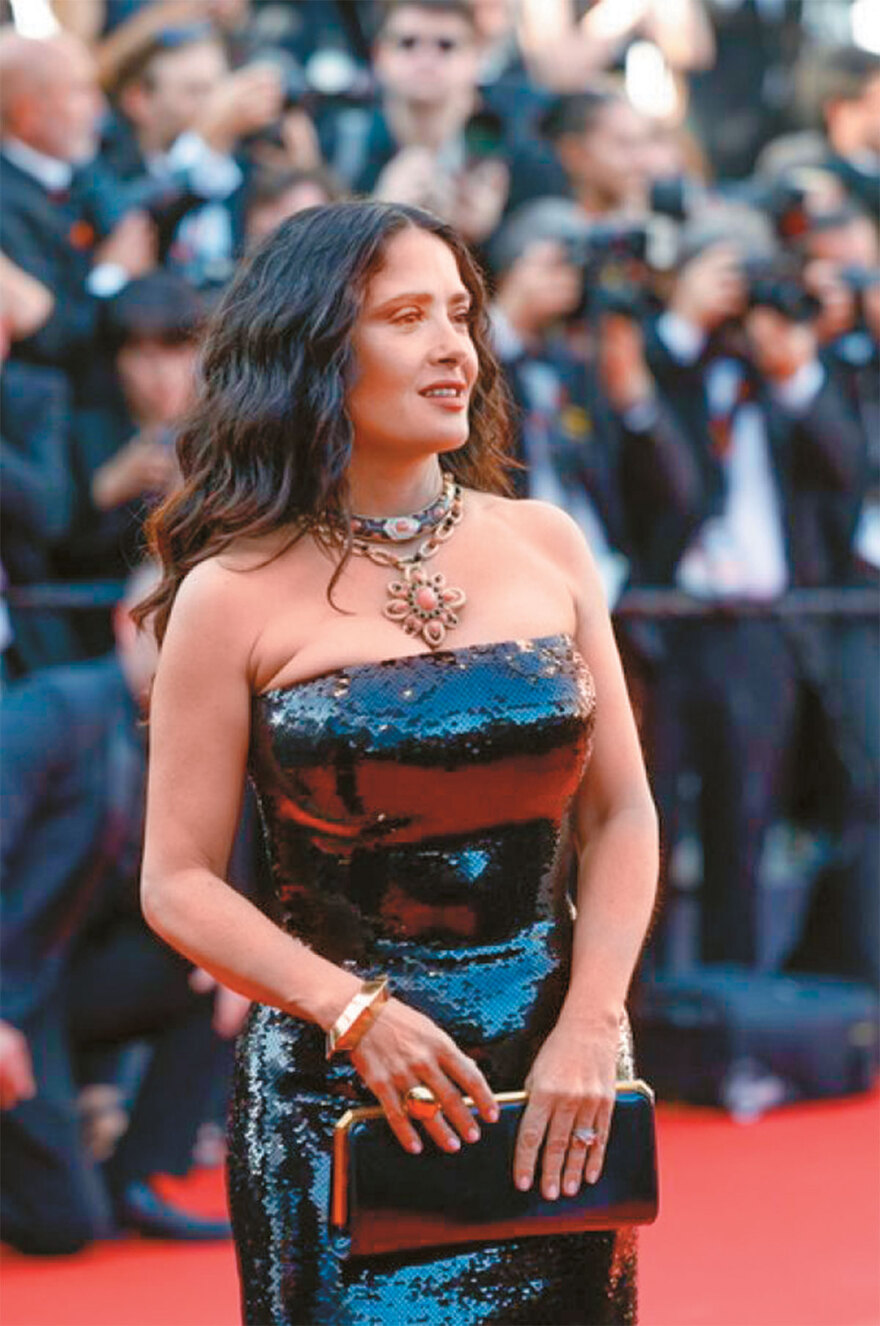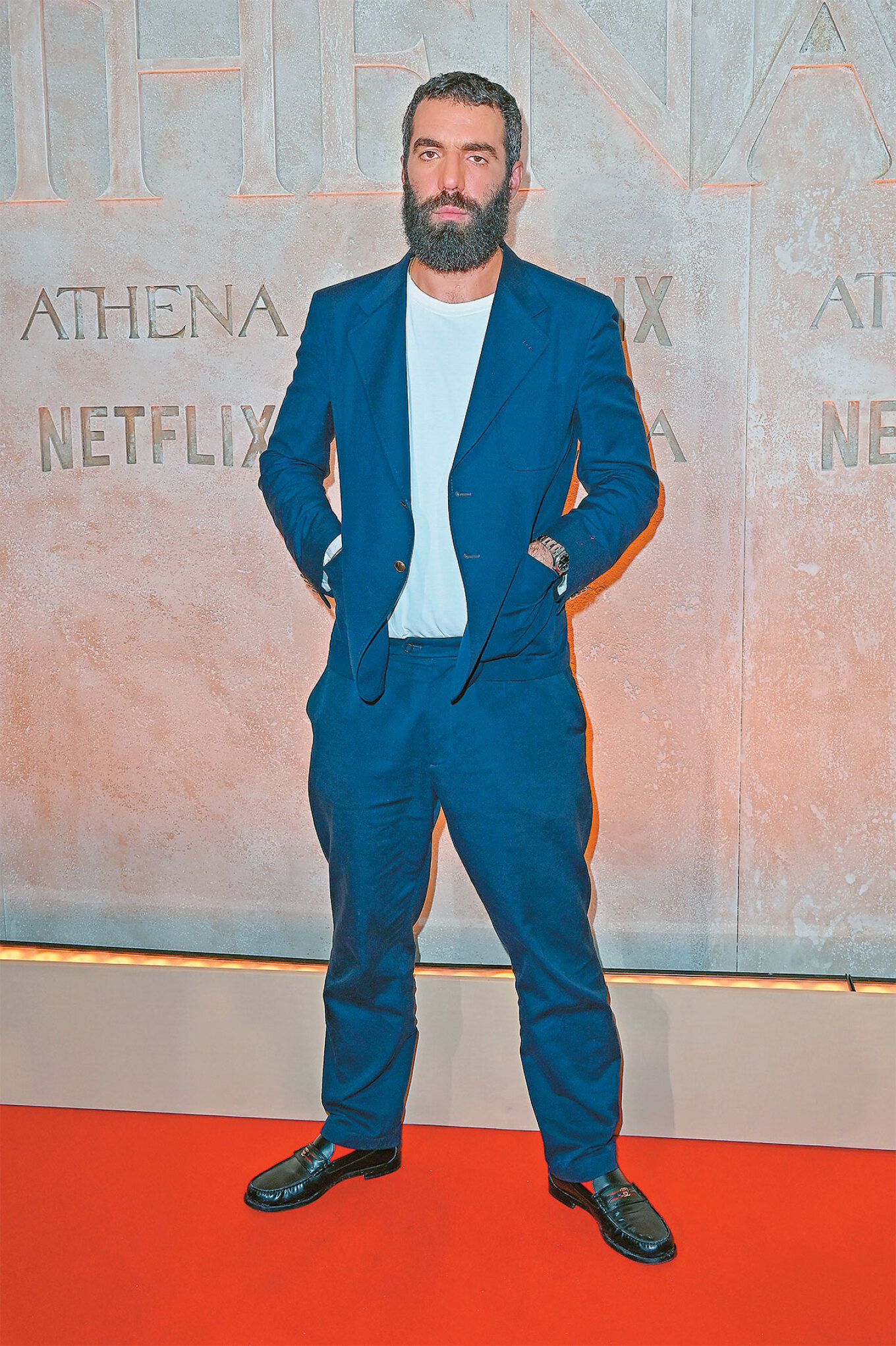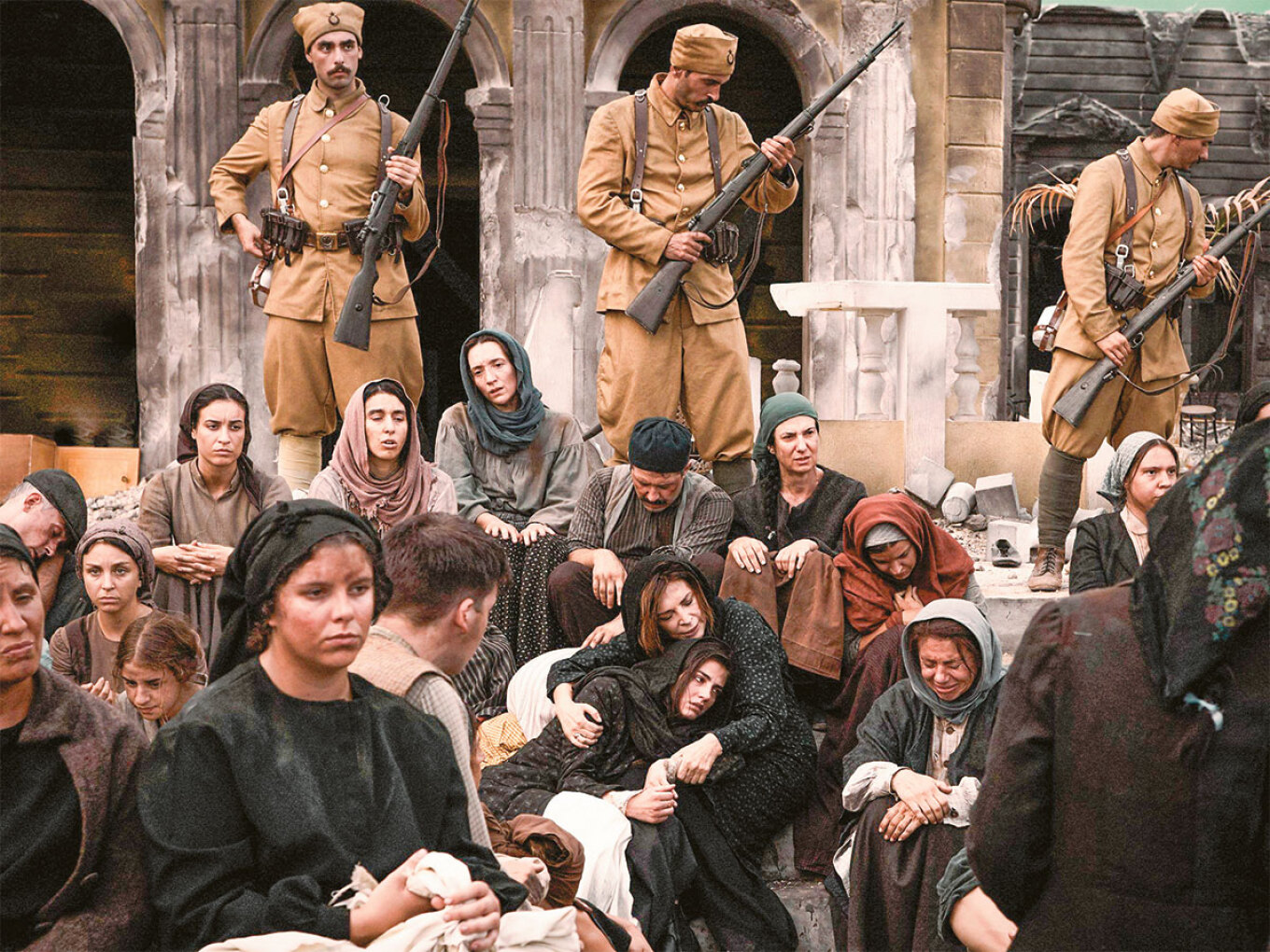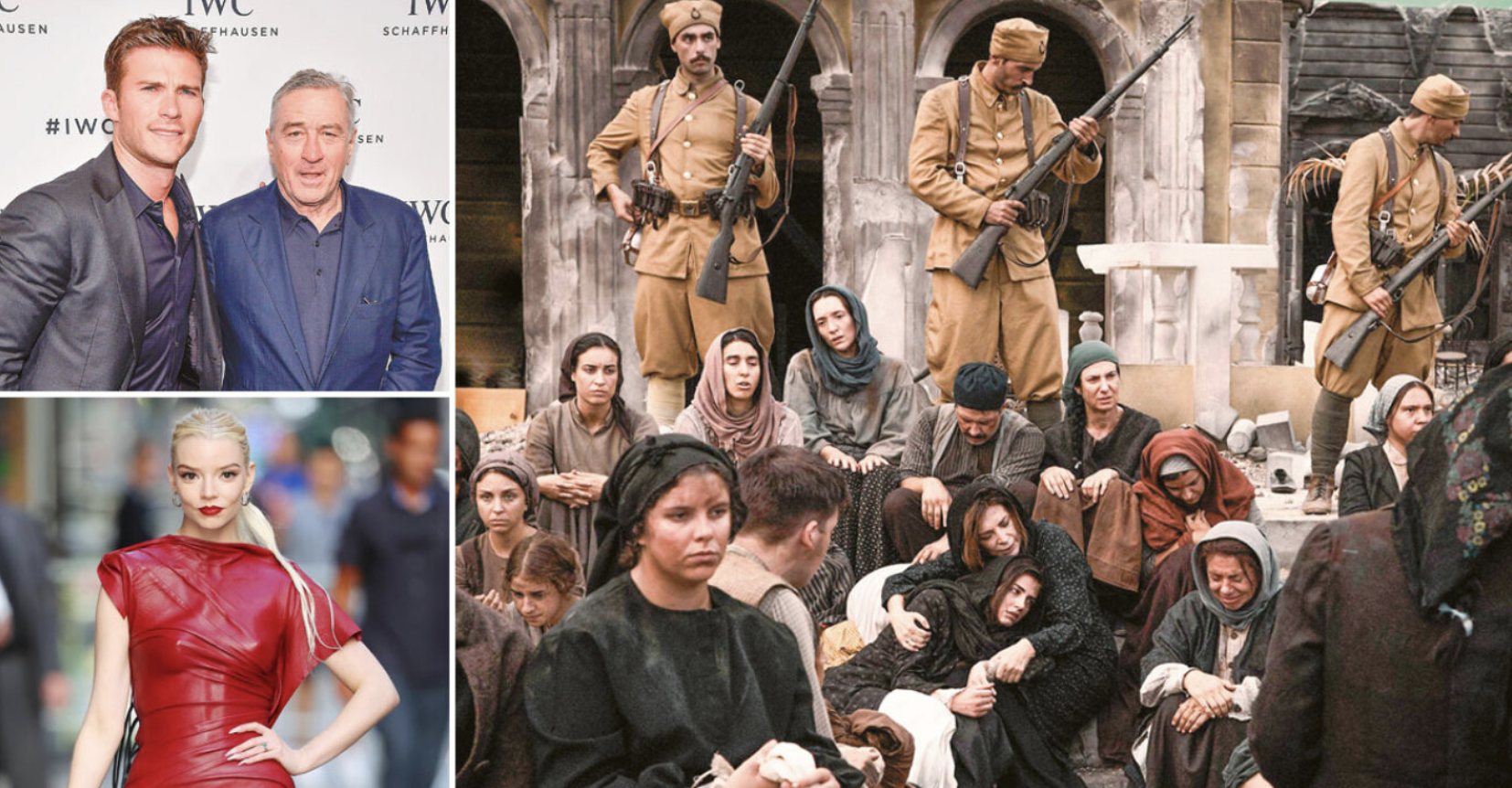A stellar cast with top-tier actors, Hollywood-level standards, numerous extras, and stunning outdoor scenes characterize Romain Gavras’s new film Sacrifice, produced by Netflix, which is filming from Northern Greece to Athens and the islands.
The film features locations like the marble quarries of Volakas, old factories, and the Piraeus 260 complex, known for hosting summer festival performances. Gavras’s film, set against these unique backdrops, is expected to bring a spectacular dimension to the material of a dystopian reality that inspires the movie.
In addition to Gavras’s longtime friend Vincent Cassel—known for films like Ocean’s Twelve and Ocean’s Thirteen and remembered for Irreversible alongside his former wife Monica Bellucci—a notable cast will gather in Drama, where filming has already begun. Among them is Salma Hayek, famous for Frida and House of Gucci, who is widely recognized as the wife of powerful businessman François-Henri Pinault.



Also present are Vincent Cassel, Anya Taylor-Joy, and Salma Hayek, who will soon be filming in Drama. Anya Taylor-Joy, recently spotted in central Athens with her husband, musician Malcolm McRae, is one of Hollywood’s most sought-after actresses, known for The Queen’s Gambit, Peaky Blinders, and Furiosa: A Mad Max Saga. She will also star in Netflix’s upcoming How to Kill Your Family series.
Joining the star-studded cast are Chris Evans (Captain America, Fantastic Four) and Sam Richardson (Hocus Pocus, Velma, The Tomorrow War).
The production team has issued an open casting call for extras and supporting roles, offering participants the chance to take part in an impressive production in various locations in Northern Greece, such as the Falakro ski resort and the Volakas quarries.
It remains uncertain whether Gavras will visit his favorite island, Sifnos, but he has already filmed in Athens, including at the Piraeus 260 site and other industrial settings, which he favors for his dystopian themes.
Previously, Gavras used unusual landscapes in his Gener8ion project, entirely filmed in Attica. This coproduction between Onassis Culture and Gavras’s Iconoclast company depicted post-apocalyptic scenes of Athens in 2034.
Showing a strong connection to his Greek heritage, Gavras is also active as a business owner in Athens as co-owner of the bar-restaurant “Seven Martyrs” in Neos Kosmos, named after a chapel in Sifnos.

The Creative Palette
Few people grew up hearing Greek mythological tales as bedtime stories while their parents rejected the convenience of Disney films. Romain Gavras, however, grew up enchanted by the myths his mother told him, tales of invincible heroes like Hercules, clever Theseus, and mighty Zeus—figures that have since found symbolic presence in his artistic world.
Thanks to his father, renowned director Costa Gavras, he developed a love for Kurosawa and a passion for fantasy books he often found at forgotten video rental shops. This unique mix of classic film education and futuristic aesthetics, combined with his fondness for music videos (many of which he directed for major artists like M.I.A., Kanye West, and Jay-Z), now deeply informs his own creations.
Gavras’s advertising work for luxury brands like Dior also made a lasting impact, infusing a rock edge into the glamorous world of premium fragrances and cosmetics. His films, distinctively his own and carrying a different vision from his father’s, have garnered attention at international festivals like Venice, where his latest film, Athena, inspired once again by Greek themes, was screened.
Original Screenwriting
This time, Gavras collaborated on the screenplay with acclaimed writer Will Arbery, a Pulitzer finalist known for his work on HBO’s Succession and the politically charged play Heroes of the Fourth Turning. This partnership led to a radical screenplay that merges futuristic elements with political and science fiction themes, aiming to explore how we envision the world we live in. Without revealing much, the production company has hinted at a storyline touching on climate change.
The Plot of the Film
Few details about the film’s plot have been released, but sources indicate that it centers on a volcanic island where an unusual gala brings together famous film and business stars. One of these figures, the world’s most powerful and wealthy, becomes the victim of a kidnapping by an extremist group tasked with fulfilling an ancient prophecy.
The group is led by Joan, who, with theological and political fervor, guides her followers to decode the prophecy’s messages, believing they can save the world. This mission leads to extreme actions, offering Gavras an opportunity to depict intense scenes linking ancient Greek myths with mystical theories about a hidden sanctuary—a theme prevalent in French thought since the late 18th century.
Such themes have long fascinated Gavras, as has the recurring question in his films of whether extremists can truly be more radical than corrupt power structures. This question, along with the search for meaning in a disillusioned world, returns in Athena and other works, exploring the cinematic fascination with prophetic elements and an apocalyptic worldview.
By responding to and distancing himself from Hollywood’s focus on clear-cut narratives of good and evil, heroes and victims, Gavras—steeped in European cinematic sensibilities—will likely leave audiences to interpret the identity of violence and rebellion for themselves, much as he did with Athena.
Robert De Niro and the Filming of “Tin Soldier” in Drama, Greece
Beyond Romain Gavras’s production currently underway in the Drama area, other major filmmakers are also turning their attention to this region, previously unfamiliar to international cinema. One prominent example is Tin Soldier, which features stars like Robert De Niro, Scott Eastwood (son of Clint Eastwood), Jamie Foxx, and Rita Ora.
Filming took place in some striking locations around Drama, including the Tobacco Institute building and the Cave of Aggitis, though the movie has yet to be released in theaters.
New Projects in Greek Cinema
The Greek film industry continues to grow, supported in part by incentives from the National Centre of Audiovisual Media and Communication (EKOME). Netflix, which recently invested in Greek projects like Maestro, has expressed interest in Greek productions, with several new projects on the horizon. Among them is Mimi Denissi’s anticipated production, Madre – Mana, set in Thessaloniki. This film builds on her earlier work My Beloved Smyrna and is set to reach an international audience.
The story unfolds in Thessaloniki, a historical multicultural hub where Greek refugees from Asia Minor, Armenians, Pontians, and Jews once coexisted. The plot focuses on memories dating back to 1943 when the city’s Jewish population faced forced expulsions.

The upcoming series, planned to span 24 episodes, begins in 1943, as revealed by Mimi Denissi. It opens with a woman gazing out her window, witnessing the forced departure of Thessaloniki’s Jewish population. She hears a young girl call out “madre” to her mother, who has fallen, intertwined with the echoes of “mama, mama, mana.”
This emotional scene sets the tone for the series, which will be filmed in various locations across Thessaloniki, transformed to match the period, similar to how Athens’ Faliro waterfront was once made to resemble Smyrna’s burning promenade in My Beloved Smyrna.
Next spring, iconic landmarks like the White Tower, Eptapyrgio Fortress, and the church of Saint Nicholas Orphanos, along with areas such as Ano Poli, Modiano Market, Kapani, and the old port, will serve as the living backdrop.
The series will bring Thessaloniki’s history to global screens through the streaming platform, powered by Denissi’s vision and her production company. The cast is expected to include actors from My Beloved Smyrna, Denissi’s long-time collaborators.
Ask me anything
Explore related questions





